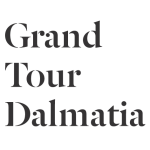Overview
Historical Documents (e.g. Notarial sources; Census records; Ecclesiastical documents; Correspondence) Drawings, prints, and other pictorial sources Archaeological or architectural heritage Archive Photos Platform for data aggregation or retrieval Landscape reconstruction Urban History
The Institute of Art History’s multi-disciplinary research project, “Grand Tour Dalmatia” (2014-17), which was supported by the Croatian Science Foundation, brought together a team of theorists in the fields of comparative literature, architectural and art history, history, and architecture. Their task was to identify, study and interpret phenomena related to the description of space in the eighteenth and nineteenth centuries, with a focus on Dalmatia.
The project began with the collection of various works by important author-travellers that visited Dalmatia in this period, which were scattered across a wide variety of sources and archives. The overall aim was to research the following topics together: textual and visual records of space throughout time; the formation of perceptions of a particular space (Dalmatia) in its socio-cultural contexts throughout time (the 18th and 19th centuries); and the influence of travellers’ experiences on intellectual, cultural, artistic and architectural practices in a specific period (Neoclassicism and Romanticism), in local and global contexts. Together, these research topics lead to a rethinking and deeper valorization of the Dalmatian urban landscape in its historical context, thus creating the basis for the preservation and more profound transformation of its inherited spaces.
The formation of a database that deals with records about space in time had to begin with the formation of a relationship towards time and space, those two fundamental attributes of reality. This relationship within the chronogeographic database as a system of organizing records of space was determined by the topological and chronological heterogeneity of the materials themselves.
In recognizing that the archive of Grand Tour texts is ambiguous, heterogeneous, and also interdependent in countless ways, we realized that the database itself needed to follow this construction and be dynamic and diverse. Above all it had to offer unexpected combinations of records and directions for research. So the methodology used to create the database is a system of multiple synchronicities: both within a set of structured data, as well as through their integration with the spatial and temporal dimensions.
The basis of the chronogeographic database created for the purposes of this project are the timeline and the spatial map, which function as tools for navigating a dynamic system, and the continuous menus that allow for the constant combining of research parameters and the synchronizing of information. In this way they include intuitive, new exploratory mappings.
The timeline above it an interactive map of Dalmatia spans the entire period from 1700 to 1914, that is, the chronological scope of the project. If we select specific dates on the timeline, only the places visited at that time will be displayed on the map of Dalmatia. The reverse option is also available. When we select specific places on the map, the timeline shows the periods when they were visited.
All synchronicities are built on this basis, which allows records of space in time to extend beyond the limits of our imaginations, offering us opportunities for research in new, interdisciplinary directions.
The chronogeographic database is therefore not based on spatial-temporal positioning, but rather on shifting focus, change and the combination of information.
Chronogeographical database concept: Damir Gamulin, Ana Šverko
Database design: Damir Gamulin
Database development: Bruno Babić
Data collection: Irena Kraševac, Iva Raič Stojanović, Jure Roić, Ana Šverko, Ivana Vlaić
Project partners
Associated partners
Other partners
- Split Municipal Museum
- Ministry of Culture of Republic of Croatia
- V & A museum
- Hermitage State Museum
- Albertina Museum
- Croatian National Library
- Trogir Municipal Museum
